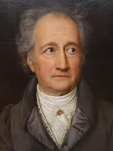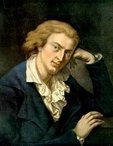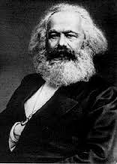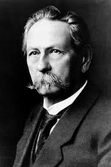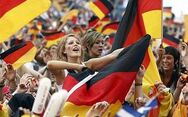
| ||||||||||||||||||||||||
| Total population | ||||||||||||||||||||||||
|---|---|---|---|---|---|---|---|---|---|---|---|---|---|---|---|---|---|---|---|---|---|---|---|---|
| 150,000,000 | ||||||||||||||||||||||||
| Regions with significant populations | ||||||||||||||||||||||||
| ||||||||||||||||||||||||
| Languages | ||||||||||||||||||||||||
|
Native Languages | ||||||||||||||||||||||||
| Religion | ||||||||||||||||||||||||
|
Roman Catholicism, Protestantism, non-religious | ||||||||||||||||||||||||
| Related ethnic groups | ||||||||||||||||||||||||
|
Other Germanic peoples such as the Austrians, Liechtensteiners, Swiss Germans, Swedes, Dutch, Norwegians and English peoples |
The Germans (German: Deutsche) are a West Germanic ethnic group native to Central Europe, sharing a common German ancestry and culture. The modern German identity originated from the unification of the German-speaking communities in the Holy Roman Empire.
The German ethnicity can be decided on a couple factors: ranging from ancestry itself, national and ethnic affiliation, to native speakers of the German language. The last factor can conflict, as there are countries with German-speaking majorities (Austria, Luxembourg and Liechtenstein) whose people do not consider themselves ethnically German, despite natively speaking the language.
In addition, there are millions more of people with German descent, partial or full, living in the United States, Argentina, Canada, Russia and Kazakhstan making the German ethnicity contain one of the biggest diaspora populations.
The German people also made great pivotal contributions to the Classical, Baroque and Romantic eras of music and the Renaissance Era of Europe.
History
Early History
The Germans are native to central Europe from group of tribes known as the Germanic people at the time. The real emergence of a German ethnicity that is bind together by a common language was formed during the Dark Ages, spanning land that is now Germany and Austria. The central Germanic tribes that eventually became the Germans were annexed by the Roman Empire in the province known as Germania, a multi-ethnic kingdom, that was made of many European and non-European ethnic states, such as Latinic, Greek and even Arab states.
In the Roman Empire "Germania"

Roman historian Tacitus
Migrations dominated the Germanic-speaking realm around the third century B.C. The Romans and Germanic tribes made their earliest contacts around the second century B.C., when members of the Cimbri and Teutoni tribes crossed into Southern Europe. Modern-day knowledge of the ancient Germanic tribes can be owed to the Roman historian Tacitus, in his book Germania. In this work, Tacitus describes the various Germanic tribes, their locations as well as their relations with the Romans. The Germanic tribes dominated much of the Roman Legion, the elite military forces of the Roman Republic. Settling around the west bank of the Rhine River, then a Roman province known as Germania Inferior, the tribes of Menapii, Batavi, Condrusi, Atuataci and Eburones resided. On the other side, on the around the eastern banks of the Rhine where the Frisii, Chaucii, Istavones, Sicambrii, Marsii, Cattii, and the Ubii. The Ubii contributed to the Roman army, providing them with much-needed cavalry. In the south of Germania Superior dwelled the Triboci, Rauraci, Nemetes, Caracates, Sequani amd Helvetti. Across the Rhenus and farther east along the Danube was the home of the Marvingii, Nariscii, Burgundiones, Hermundurii, Seubii and the Cheruscii. Between 166 and 180 AD Marcus Aurelius battled the Marcomanni and Quadi tribes around the Danube River.[8]
The Frankish Kingdom 481-843 A.D.
The people known as the Franks originated from the tribes of Germania Inferior. They would form what would be referred to as the Frankish Kingdom (Latin: Regnum Francorum). The Franks were a warring people. In 358 A.D., the Romans and Franks signed a treaty which allowed the Franks to settle in Roman-controlled territory between the Meuse and Schelde Rivers. In return, the Franks would provide the Romans with military support, such as recruits. The result was growing Frankish influence within the empire, with the formation of an autonomous Frankish state.
Merovingian Dynasty

Artist's rendering of King Clovis
The Salians were the tribe that dominated the Frankish peoples. They were later referred to as Merovingians, taken from their ancestor Merovech. According to Frankish folklore, Merovech was of divine descent. The Salians were known for uniting the Frankish tribes during the 5th century.
The Franks/Merovingians ascended to glory under the reign of Clovis. A fierce ruler, Clovis not only defeated rivalling Frankish kings but he also defeated Roman Emperor Syagrius. In doing so, Clovis had defeated and conquered the last remains of the Western Roman Empire. IN 496 A.D., Clovis defeated the Alemanni, in which the tribe's name would become one of the namesakes of the German people. His queen consort, Clotilda influenced and eventually goaded him into converting to Roman Catholicism rather than the rivalling Arian Christian section the other Germanic tribes followed.
Clovis conquered Aquitaine (today located in modern-day France) in 507 A.D. Clovis later became appointed as a Consul of the Eastern Roman Empire. This gave the Frankish even more power and political influence and prestige. After Clovis died in 511 A.D., each of his four sons ruled a portion of the kingdom. Up until 531 A.D., the Merovingian realm underwent a period of civil war. Beginning 531 A.D., the Franks continued to once-more conquer large swaths of territory, defeating and conquering the Burgunidians by 534, Ostrogoths and Province by 537 and exerted influence over the Bavarians.
The divisions between the Merovingians themselves spawned three independant Frankish states, namely Nuestria, Austrasia and Burgundy. The split was exploited by the conquered Germanic peoples in an attempt to wage war against the Frankish rulers. After Frankish king of Austrasia Dagobert I died in 639 A.D., the Thuringians achieved their independance. Brtianny, Bavaria and Alemannia soon followed.
Carolingian Dynasty
Frankish power was restored under the reign of Charles Martel, who after the fall of the Merovingians, ruled under the next ruling dynasty: the Carolingians. In 732 A.D., the Franks fought back an Arab invasion. Under Carolingian rule, the Franks re-conquered some of their lost territory, namely Bavaria, Thuringia and Alemannia in 744 A.D. They also conquered the Balearic Islands (located in modern-day Spain).
In 751 A.D., Charles' father-in-law Pepin the Short overthrew the last Merovingian king. In 771 A.D., Charlemagne became the undisputed ruler of the Franks. In 774 A.D., he conquered the Kingdom of Italy and integrated it into his empire. From 772 to 804, Charlemegne subjagated the Saxons to his rule, through brute force and fear tactics.
In 844, Charlemagne died. Like most empires after the deaths of conquerers, the Frankish Empire was divided into fueding states.[9]
Holy Roman Empire

A German statue of Otto I
The Holy Roman Empire (Latin: Sacrum Romanum Imperium) spawned amid the waning days of the Carolingian dynasty. It also formed a foundation for modern-day Germany, as well as other countries in Central Europe. In 800, Charlemagne was crowned the Emperor of the Roman Empire by the Pope. The Pope, having faced threats from Germanic tribes in the Italian Peninsula often relied on Germanic miitary leaders, as the previous Roman Empire before it had done.
In 962, a Otto I the Great (German: Otto I der Große) is appointed Holy Emperor by Pope John XII. Otto I would continue his father's mission of uniting all of the Germanic-speaking peoples of Central Europe into a single nation. In 955, Otto I fended off a Hungarian invasion, which was known to have ended the Hungarian incursions into Western Europe.[10] As the Hungarian armies were pagans at the time, Otto I was known as a savior to Christianity in Western Europe. He conquered Italy in 962. This earned him his coronation as Holy Emperor in 962.
Otto I's line of descendants would continue to rule the Holy Roman Empire for nearly eight centuries, known as Ottonian dynasty (German: Ottonen). In 967, Otto I made his son, Otto II the co-emperor to consolidate their rule.
Distinctly, Otto I and his descendants also worked to control the papacy through rulers, rather than vice versa. This policy then creates a rift between the monarchy and the papacy. In 1046, three popes had been relinquished under the rule of Henry III. Pope Nicholas II attempted to address the problems and in 1059, decided that the Pope would be elected by religious authorities, rather than the monarchy. This was rejected by the imperial-appointed bishops of Germany in 1061.[11]

Map of the Holy Roman Empire at its greatest extent
In 1075, the monarchy had been stripped of their sacral status, seperating the church and state into two different responsibilities. In 1125, the last Salian king Henry V died. His descendants however, did not inherit the throne and instead, princes of the empire chose Lothair, the Duke of Saxony. In 1138, the process repeated, Lothair died and his descendants did not inherit the throne. Rather, Conrad III of the Hohenstaufen dynasty was chosen as the next emperor.
Frederick Barbarossa, nephew of Conrad III ascended the throne in 1152, and made peace with the rivalling Welf dynasty. He even returned Henry, his cousin, his possessions which had been seized by Conrad III from the Welfs. Under the Hohenstaufen dynasty, the rulers embarked on a mission to unifiy and spread peace throughout the empire. This included ending tribal fueds between dukes. They also introduced a criminal justice system of persecuting those who commit public crimes. This would provide a precedant for today's "rule of law".
Building projects of cities were also characteristic of this era of rule, which spawned the cities of Munich and Freiburg. In 1155, Frederick ascended the throne. Under the rule of Emperor Frederick, he began to re-introduce old Roman constitutional law and focused on reviving the Roman culture of the empire. The empire would extend its reaches easterward, with the migration of Germans into modern-day Poland and the Czech Republic. These lands were either inhabited by Slavs, or uninhabited. Nonetheless, Germans would intermingle with the native Slavic peoples of these lands.
Under the rule of Henry VI, the Holy Roman Empire annexed the Kingdom of Sicily. During the 13th century, the Holy Roman Empire became split into territories that would precede many modern-states in Central Europe. The Holy Roman Empire would slowly crumble as the 1400s through 1600s progressed, with kings and rulers putting their own interests over the empire, and relying soleley on the lands they ruled. Additionally, the Catholic Church was also facing internal struggles of papal succession, and was event being challenged. This would pave for the way for the Reformation.
The Holy Roman Empire finally ended during the Napoleonic Wars, under the hands of French emperor Napoleon Bonaparte at the Battle of Austerlitz. In 1806, the last Holy Roman Emperor, Francis II abdicated the throne.
Protestant Reformation
Amid the waning days of the Holy Roman Empire, the Catholic Church was being attacked and challenged for their corruption. Bible translations were also becoming more accessible than before. Opponents of the Catholic Church used of theologian Augustine of Hippo's teachings as a basis of their arguments. Augustine, a native of North Africa, preached that the Bible is the final source of authority, not church officials. Augustine also emphasized that only God can give salvation, humans can't give themselves salvation. The Catholic church preached otherwise, that pleasing God through good works could get one to Heaven. Martin Luther, a theologian from Saxony emulated Augustine's teachings. Luther would lead the crusade against the Catholic Church. One of the most infamous acts of the Catholic Church
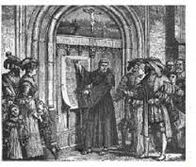
Artist's rendering of the 95 Thesis nailing
was the selling of indulgences, which would allow sinners to buy their way into Heaven. Despite being banned in Germany, the selling of indulgences continued. In 1517, Johann Tetzel, a friar sold indulgences in Germany to help renovate St. Peter's Basilica, today located in the Vatican City. Basing his teachings solely on salvation, Luther argued and fought against the church. He wrote the "Disputation on the Power and Efficacy of Indulgences," more commonly known as the "The 95 Theses," a list of grievances. In an act of defiance, he nailed a copy of it to the Wittenberg Castle church's door on October 31, 1517.
On January 3, 1521, the Catholic Church excommunicated Martin Luther and labelled him a heretic.[12]
Classical Era of Music
Main Article: Top Classical Composers on About.com
Spanning seventy years, the classical period is a time when composers began pulling in the reigns of the many baroque period musical styles by creating strict compositional "rules and regulations." Yet within their rigidity, great composers like Haydn and Mozart were able to create some of the greatest classical music the world has ever known, though they weren't the only composers responsible for superb classical period music. This classical era of music was mostly dominated by German and other Central European composers of people such as Wolfgang Mozart and Ludwig Von Beethoven.
Kingdom of Prussia 1525-1871
The Kingdom of Prussia (German: Königreich Preußen) was not part of the Holy Roman Empire. The kingdom was found and ruled by members of the Hohenzollern family. Many of its rulers bore the name "Frederick William". The kingdom was found by Frederick III, the grandson of a Prussian military leader by the Frederick William also known as the "Great Elector" who saved Brandenburg from collapse by absorbing other kingdoms before they could invade it.
Frederick William got Prussia involved in the Great Northern War, fought between the Russian Empire and the Swedish Empire at the threat of an invasion. Frederick wanted to make an example out of Prussia, and prove its military abilities in order discourage foreign invasions. With the defeat of the Swedish Empire, Prussia gained the territory of Pomerania. Initially, Williams' decision to get Prussia involved in the war elevated it, along with the Russian Empire as new military powers.[13]
In 1740 under the rule of King Frederick II, the Prussians invaded and annexed Silesia, going against Austria's wishes. This caused the Austrians to join France, while the Prussians joined Great Britain in their war against France. King Frederick would wage the Severn Years-War in 1756-1757. In 1760, he nearly lost against a coalition that consisted of Russia, Sweden, Austria and France. However, Empress Elizabeth of Russia died, the succeeding emperor Peter III was a fan of Prussian culture and influence, and Sweden exited the war.
After the Prussians defeated the Austrians at Burkersdorf, the kingdom officially was regarded as a military power. In 1772, Frederick initiated the Partition of Poland to prevent Russian domination and influence of Europe. Much of western Poland was annexed and absorbed into the Prussian Empire.
In 1787, the Prussians invaded Holland to fight the democratic rebels that challenged their authority. Victorious, the Prussians restored their "Orange stadholder", a position similar to a head of state.
During the 14-year Napoleonic Wars, the Prussian army joined the coalition that consisted of British, Russian and Austrian armies to fight Napoleon's near-unstoppable army. The Prussians were amongst the victors during the Battle of Waterloo, in which marked Napoleon's final defeat and exile. Afterwards, the Prussians regained territory it had lost to French forces, including Polish territory, as well as new territory in the Rhineland and Westphalia.
In 1858, King Frederick William married Princess Victoria of Britain.[14]
Modern Prussian glory came under the leadership of Otto von Bismarck, who was appointed as the Chancellor by King Frederick William. Upon his role as chancellor, Otto swayed the monarchy under his influence, to achieve his goals. A manipulative leader, Otto often provoked disputes, disagreements and enmity with the sole intent of starting wars to conquer and unifiy the German-speaking states. In 1864, Otto von Bismarck attacked the Danish kingdom to gain control of its German-speaking communities, and in 1866 fought the Austro-Prussian War, in which he pushed the Austrian emperor to go to war. The Prussians ended up victorious under Otto von Bismarck's leadership.
Within the Russian Empire
In the Russian Empire, Germans formed a lot of the upper classes. In 1762, the Russian Empire was ruled by a German empress, crowned by the regnal name Catherine II (Russian: Екатерина II). Catherine II served as one of the Russian Empire's longest-reigning monarchs, and brought the empire to new heights, and a golden age. She was influenced by Tsar Peter the Great, and continued his various movest to modernize and westernize the Russian Empire. During her reign, she promoted mass immigrations of anybody wanting to live in Russia, therefore, many Germans ended up settling along the Volga, which recieved the highest concentration of German immigrants. Many others migrated to the Black Sea and the Dneiper River areas. By 1897, some 1.8 million people in the Russian Empire reported German as their mother toungue.
After the Napoleonic Wars, the German communities in Russia began to assimilate in an act of patriotism. They slowly abandoned German as their native language, and many of their descendants spoke only Russian. As such, most Russians today of German descent are mostly assimilated, bearing Russian names and speaking only Russian.
German Empire 1871-1918
Bismarck initiated enmity between France and the German states during the Franco-Prussian War fought in 1870 and 1871. After annexing Alsace and Lorreine, Emperor William was crowned as the undisputed ruler of a new and unified German Empire (German: Deutsches Reich).
In the 1880s, Bismarck set aside his conservative stances, setting up the first welfare state. He introduced national healthcare, old age pension and accident insurance.[15]
In the 1890s however, he was forced to resign his position as Imperial Chancellor due to political disagreements, mostly concerning his careful approach to global politics in Europe. However, he was given the title Colonel-General with the Dignity of Field Marshal of the German Army.
World War I 1914-1918
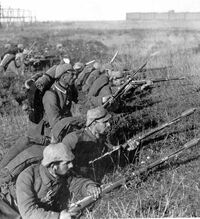
German troops in a dug-out trench
The early decades of the 1900s were marked by countries' thirsts for global domination. In Europe, countries such as Britain, France, Germany and Russia were amassing armies and navies. It also saw the use extensive use of machines in the military for the first time in history by the large countries, those mentioned above. The smaller countries were still using cavalries. Following the murder of Archduke Franz Ferdinand, the Austro-Hungarians attacked Serbia, an ally of the Russian Empire since the militants responsible were Serbs. The Imperial Russians attacked the Austro-Hungarians, which was a German ally which in turn caused the Germans to retaliate against the Russians. Despite early failures, the Germans were able to capitalize against the Russians, who were not as advanced and lacked unity due to a communist revolution that was taking place. The Germans also invaded France and Belgium which resulted in the other Allied powers such as Britain and France to retaliate. The Germans also urged Mexico to join its side, and sunk innocent and un-armed American ships in the Atlantic Ocean, which led to American intervention. The arrival of American soldiers turned the tides for the allies. Germany was eventually defeated and forced to sign the Treaty of Versailles, a treaty that blamed Germany for the war and forced it to agree paying large war reparations that was destined to last until 1975. The Treaty of Versailles created a deadly turmoil for the Germans. Their economy was completely devastated, let alone having to pay large, expensive and nearly unaffordable war reparations to the allies. Germany's army was also reduced to no more than 100,000 men and were no longer allowed tanks and planes.
The last German king, Kaiser Wilhelm II abdicated the throne in 1918 amid an anti-monarchy revolution.
Weimar Republic 1918-1933

A 1922 photo of German children using stacks of the near-worthless marks to play a game
Across the country, angered German citizens began to side with democratic and socialist ideals, favoring the overthrowing of the monarchy. They initiated a political revolution resembling the ones that took place in Russia. However, the German socialist revolution was non-violent. In 1918, a Constitutional Assembly was held in the city of Weimar, which would become the common unofficial namesake for the succeeding German nation known as the Weimar Republic (German: Weimarer Republik). Life in the post-World War I Weimar Republic was very miserable. With its military sources depleted, and its once-powerful military restricted and shrunk to simply a force resembling a national police, Germany also lost most of its territories and colonies.
In addition, its economy was ravaged due to the harsh sanctions and embargoes that the victorious Allies imposed on Germany, one of these being the near-impossible war reparations which Germany was expected to keep paying up to the 1970s. The German marks, the nation's currency suffered mass inflation, making the money near-worthless.[16] An entire wheelbarrow filled with German mark banknotes would be able to buy a person a half-loaf of bread at best. The value of the German marks was so low, that the banknotes were eventually used for non-monetary purposes, like being used as writing paper or for games.
Nazi Germany 1933-1945
Adolf Hitler, an Austrian revolutionary, siezed power after he became Chancellor of Germany in 1933. Hitler turned Germany into a socialist and police state, however did many beneficial and positive things for the country. Hitler used a party known as the "Nazis" to dominate Germany, which had once been nothing more than a worker's political party. Vying for revenge against the terms of the Treaty of Versailles, Hitler introduced many economic and political reforms, that actually improved the country's economy. The privatization of the German economy led to a huge increase in jobs and wages. Hitler amassed Germany's army and built massive war machines such as tanks and the Luftwaffe plane. However, economic improvement was not Hitler's only goal, as he had another goal in mind: to eliminate what he believed to be a "Jewish problem". Hitler blamed Germany's downfall on the Jews, and believed that the victorious Allies from World War II, and those who wrote the Treaty of Versailles were Jews. Hitler also became a ethnic supremacist, pushing the Germans or in his view, the "Aryan race", as the superior to all others and blamed the Jews for Germany's suffering. This would form the foundation for Hitler's conquest of Europe and the atrocity known as the Holocaust, committed against Jews and any race that Hitler deemed unworthy.
World War II 1939-1945
The German nation enjoyed an improved economy and status as a military power once-more under Hitler. In addition to the amassed German military (known as the Wehrmacht), Hitler also established a powerful paramilitary group known as the Schutzstaffel, or by its better-known acronym, the SS. The SS had full military capabilities in both training and equipment, and more often-not, aided and fought alongside the Wehrmacht in the battlefield. The SS primarily handled the Holocaust of the non-Aryans, while the Wehrmacht operated on the battlefields, though both groups often intertwined their activities. Henreich Himmler was the commander of the SS, and would become one of Germany's most powerful men below Hitler. European nations resorted to
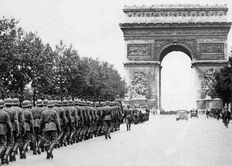
German march to Paris
diplomatic solutions to stop the threat of Hitler's conquest, but Hitler simply used these to decieve the western nations. The Germans swept through Europe and had a successful beginning, defeating most of the resistance. One of Hitler's main targets was France, a sworn enemy of Germany's and generally one of Europe's more powerful alleged militaries. The French army decisively failed to stop Hitler's juggernaut despite having a manpower and tank force almost equal to that of Germany's. Hitler used a war tactic known as the blitzkrieg which literally means "lightning war" in German in which troops, tanks and planes pound one place at a time. Erwin Rommel, Hitler's best general - became a big driving force in the Germans' domination of North Africa. The French defeat shocked, stunned and devastated the allies. Erwin Rommel was finally defeated during the Battle of El Alamein in Egypt by the British and American forces, and after the Allied D-Day invasion of Normandy. Hitler had another obstacle, and major target to the east: Stalin and the Soviet Union, with whom he had cooperated with in 1939 during the invasion of Poland. Communism was another major ideology that Hitler saw a dangerous Jewish creation. In the summer of 1941, Hitler's forces stepped onto Soviet soil

German POWs after surrendering to the Soviets in Stalingrad
opening the Eastern Front of World War II, as well as violating and abridging the German-Soviet Nonaggression Pact signed between the two countries in 1939. The beginning reflected much of the western allies' struggles, the Soviets were unable to stop the Germans at first. But Hitler's decision to fight a two-front war cost the Germans a victory. Hitler's invasion of the Soviet Union backfired on him when the Germans were overwhelmed by the vast numerical advantage that the Soviets had, and their machines malfunctioned under the wrath of the harsh Russian weather. In 1942, Hitler's armies faced their first major defeat in Moscow in 1942. Their invasion met the beginning of its end when they were defeated in Stalingrad (now Volgograd) in 1943" and Leningrad (now St. Petersburg) due to fierce Soviet resistance despite unleashing massive blitzkriegs in the cities and killing millions of Russians. These cities, along with the oil fields of the Caucasus (which Hitler failed to conquer) were the key to destroying the Soviet war machine, the plan was to starve and pummel the cities forcing the Soviets to surrender for safety. Hitler and his armies had not expected the Soviet resistance to be so strong. The German defeat at these three cities marked the beginning of the end of Hitler's seeming invinsibility and shocked the Germans. The Germans were chased back to Berlin where they were finally defeated by the rebuilt Soviet forces in 1945.
Cold War
After World War II, most Germans in the Soviet Union faced various persecutions and deportations under the Stalinist regime. The Soviet victory in Berlin led to Germany' partition between the Soviet Union and the western powers. As the Cold War progressed after World War II, Germany became divided, in the east, the German Democratic Republic (German: Deutsche Demokratische Republik) was established, and was under the Soviet Union's control. To the west was the Federal Republic of Germany (German: Bundesrepublik Deutschland) and was under NATO's (western power) control. Joseph Stalin wanted a weakened and subjagated Germany, similar to its post-World War I state but the west wanted a strongly-rebuilt nation. Stalin blockaded East Germany's roads and tunnels against western vehicles. The United States responded by sending Berlin Airlift, dropping supplies and food via airplanes to Berlin. In the 1980s, Soviet premier Mikhail Gorbachev initiated Perestroika, in an effort to liberalize the Soviet economy. Many Soviet Germans took this as an oppurtunity to emigrate back to their homeland. Following the fall of communism in eastern Europe, came the tearing of the Berlin Wall in 1989 - the Soviet Union dissoluted three years later in 1992. This reunified the German people and allowed the Germans as whole to open to western economy. Shortly after, many more Germans living in the former Soviet Union migrated to Germany, in which the German communities of Kazakhstan and Kyrgyzstan practically disappeared.
Language
The German language belongs to the western subfamily of the Germanic languages, a close relative of the English and Dutch languages. German is a world major language and has some 120,000,000 native speakers. German is the national languages of Germany, Austria and Liechtenstein. It is an official language in Switzerland, Belgium and Luxembourg. However, outside of Germany, the people of the mentioned countries do not consider themselves to be Germans, either by ethnic or national affiliation, and have developed their own national identities despite being native speakers of German.
German is spoken as a minority language in Poland, Russia, Denmark, Italy and Kazakhstan. The language has its own unique version of the Latin script, that distinguishes it from other languages that use the Latin script.
Most of the people in German diaspora do not speak German, and speak ther respective languages of the country they live in. Most German Americans or German Canadians speak only English and most of German diaspora in Latin America know only Spanish or Portuguese, those in the former Soviet Union may only know Russian. There is a group native to Germany known as the Bavarians, who make large contributions to mainstream German culture. They speak their own language, which is a Germanic language known as Bavarian, which has 13,000,000 speakers. The Amish community of the United States speaks various German dialects, particularly Pennsylvania German.
There is also a dialect known as Judeo-German or Yiddish which is spoken by Jewish Germans living in Russia, as well as the rest of the former Soviet Union, most of Eastern and Central Europe and the northeastern parts of the United States. The Yiddish language is written in the Hebrew script since Hebrew is Judaism's liturgical language. The Yiddish language contains some 1,000,800 native speakers. However despite being culturally associated with Germany, Central Europe and Eastern Europe Yiddish-speakers do not consider themselves of the German or Russian ethnicities, favoring a distinct Jewish ethnic identity.
Religion
The religion of the German people show a reflection of their history. The Roman Catholic Church and the Protestant churches both have their foundations in Germany, and are the two largest denominations of the German people as a whole. Many Germans are Roman Catholics, since the territory inhabited by the German-speaking peoples were under occupation of the Holy Roman Empire. The Catholic church also helped the emergence of an ethnic identity in the area now known as Germany. Additionally, the German diaspora living in Latin American countries such as Argentina and Brazil are Roman Catholic. After Martin Luther criticized and left the Catholic church, the descendants of those Germans who followed Luther's teachings follow the Protestant churches. In contrast to the German diaspora in Latin America, those living in the English-speaking countries such as the United States, Canada, United Kingdom and Australia are mostly Protestant. Protestantism in of itself, would eventually branch into sections, or even off-shoots, especially in Anglosphere. Most of German Protestants follow the Lutheran section of the Protestant church. However, religion has become a dwindling importance within Germany. Despite being Catholic or Protestants by affiliation, many Germans are actually agnostic and atheistic in practice.
Amish Anabaptists
In the United States and Canada, there is a community known as the Amish (German: Amische), who came from Swiss German background. They speak their own unique dialects of German, most notably Pennsylvania German (or Pennsylvania Dutch, which is a misleading term), where they are referred to as Amisch. The Amish follow a very conservative off-shoot of Protestantism known as Anabaptism. Anabaptists, like other Baptist Christians believe that "baptism" cannot be achieved by sprinkling or pouring water on someone's head, but by immersion - a literal ritual bath.
The Amish live a lifestyle of seclusion from non-Amish, and often-not only use technology if it is needed.
Most of the Amish live in the states of Pennsylvania, Ohio and Indiana in the United States, and the southern portions of the province of Ontario in Canada.
Architecture
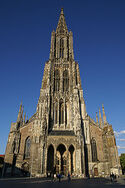
The Ulm Cathedral
German architecture is renowned for its diverse influence that reflects its history, integrating Roman, Baroque, Gothic and Neoclassical architecture. The rich architectural heritage makes Germany very attractive to tourists. The Porta Nigra (Latin for "black gate", located in the city of Trier is one the largest and most famous ancient Roman city gates in Germany. The fort, made of grey sandstone was built around the third through fourth centuries A.D. It is an UNESCO World Heritage Site. Churches and cathedrals dominate the German and Central European landscape, due the importance of the Roman Catholic and Protestant churches in German history. The city of Frankfurt contains many landmarks and structure that tells of Germany's history. The Frankfurt Cathedral and the Römer serve as two of Germany's many jewels of Gothic architecture. The Frankfurt Cathedral, although its function does not live up to its name, is a large collegiate church that the Merovingians elected their kings in. The Römer (lit. German for "Roman") is a three-story complex in Frankfurt. It features several plazas and facades. When Germany started to become a modern-day military power, especially amid Hitler's rule and the Cold War era, the architecture of Germany declined. Most of it became dominated by military bases and Holocaust death camps, resulting in an age of dullness and depression in German architecture. It was not all bad however, the Reichstag was built of Baroque influence, and is a historical landmark of German architecture. The Reichstag is also renowned for its high decore, which defied the dull architecture of its time. Today, is has been modified and added with modern features such as a glass dome. It was raided by Soviet soldiers upon the siege of Berlin in 1945
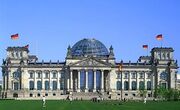
The Reichstag
and reconstruction followed. The Ulm Cathedral is one of Germany and the world's famous cathedrals. Located in the city of Ulm, it is considered one of the earliest and first "skyscrapers". The highest point of the Ulm Cathdral is 530 ft! The Berlin Wall was built during Nikita Kruschev's era in the Soviet Union, which is the main example of the dullness in architecture that the Germans experienced during the Cold War. The Berlin Wall divided Berlin into a east-west section, showing a literal represenation of the enmity between the Soviet Union and NATO. The wall was torn down in 1989, shortly before the collapse of the Soviet Union which resulted in the reunification of the German people.
Cuisine
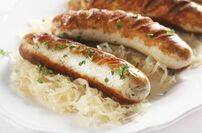
Bratwurst and sauerkraut
German cuisine is a world famous cuisine that is renowned for its high use in grinded and ground meats. It shares similarities with other European cusines, such as Austrian and Swiss, and has largely influenced the cuisines of the United States and Poland. The main meats and poultries used in German cooking is pork, beef, chicken (the most common), duck, goose and turkey. Game is also used in German cooking, such meats include rabbits and venison. Goat and lamb are found in Germany, but they are not very popular with the German people. Sausages and sausage-making are one of the most important traditions of German cuisine. They are known as wurst in Germany, where more than 1,500 types of sausages and varieties are made. Causings are usually made from the intestines of pigs, sheep or lamb. Bratwurst is a popular sausage within German food. It usually is made of cow products like beef and veal, though pork bratwurst are also made. Bratwurst can also be eaten as a sandwich. Wiener is made from either pork, beef or a mixture, and cooked by boiling. Along with frankfurter (sausages from Frankfurt, Germany), these two sausages later influenced the creation of the hot dog, a popular American food that is commonly served on a bun and eaten during sporting events. Blutwurst, also known as schwarzwurst are blood sausages. Sauerkraut is a sour sauce which can be used a topping for dishes or eaten by itself. Breads and pastries are another the big staple ingredients of German cuisine. Popular breads such as pumpernickel originated from Germany. The original German style is made sourdough as opposed to the other sweet versions found throughout the world. Cakes are popular German dessert, schwarzwälder sirschtortes is a black forest cherry cake. German style doughnuts do not have holes and they contain jam or yeast inside. Out of all Germany, Bavarian cuisine is the most famous regional out of all. The Oktoberfest is a sixteen-day celebration in Bavaria, where beer is the central element.
Notable Germans of People of German Origin
|
Otto Von Bismarck |
A Prussian statesman and military leaders, who dominated politics in Prussia, Germany and Central Euroep from 1860s to 1890s. He unified the German states, into creating the German Empire, in which he emerged as the first Imperial Chancellor of the German Empire, despite being a conservative, he also created one of the first welfare states |
|
Martin Luther |
A German religious reformer who rejected the teachings of the Roman Catholic Church, he refused to renounce his writings and was therefore labeled a heretic by the Roman Catholic Church and an outlaw by the emperor, he also translated the Bible into the vernacular German toungue rather than Latin, making it accessible for the working class, influencing English translations, his teachings led to the formation of the Protestant church |
|
Ludwig Van Beethoven |
German composer and pianist who was a crucial figure in the Classical and Romantic eras in Western music. His best-known compositions include 9 symphonies, 5 piano concertos, 1 violin concerto, 32 piano sonatas, 16 string quartets, his great Mass the Missa solemnis and an opera, Fidelio. |
|
Johann Wolfgang Van Goethe |
A German writer and statesman. His body of work includes epic and lyric poetry written in a variety of metres and styles; prose and verse dramas; memoirs; an autobiography; literary and aesthetic criticism; treatises on botany, anatomy, and colour; and four novels. In addition, numerous literary and scientific fragments, more than 10,000 letters, and nearly 3,000 drawings by him exist. |
|
Wolfgang Mozard |
A prolific and influential composer of the Classical era. Born in Salzburg, Mozart showed prodigious ability from his earliest childhood. Already competent on keyboard and violin, he composed from the age of five and performed before European royalty. He is German descent from his father, and Austrian descent from his mother. |
|
Friedrich Schiller |
German poet, philosopher, physician, historian, and playwright. During the last seventeen years of his life (1788–1805), Schiller struck up a productive, if complicated, friendship with the already famous and influential Johann Wolfgang von Goethe. They frequently discussed issues concerning aesthetics, and Schiller encouraged Goethe to finish works he left as sketches. This relationship and these discussions led to a period now referred to as Weimar Classicism. |
| Catherine the Great | Born as Sophie Friederike Auguste von Anhalt-Zerbst-Dornburg, Empress or "tsarina" of Russia from 1762 to 1796, she is the longest-ruling female ruler in the history of Russia, and is renowned for having transformed Russia into a world superpower, conquering vast swaths of territory. She was born in Prussia, into German nobility and ascended to the throne upon the abdication and assassination of her husband, Tsar Peter III. She admired Peter the Great, and continued to modernize Russia, in which many towns and cities were found. Her rule is known as the "Golde Agen" of Russia. |
|
Karl Marx |
A German (Prussian) economist, sociologist, journalist, and revolutionary socialist who first championed the idea of communism, famous for his pamphlet Communist Manifesto. According to Marx, states are run in the interests of the ruling class but are nonetheless represented as being in favor of the common interest of all. He predicted that, like previous socioeconomic systems, capitalism produced internal tensions which would lead to its self-destruction and replacement by a new system: socialism. |
| Roman von Ungern-Sternberg | An anti-Bolshevik lieutenant general in the Russian Civil War, and later a independant warlord who led a cavalry army that drove the Chinese forces out of the Mongolia in 1921 to restore the monarchy under Bogh Khan, and would attempt an invasion of East Siberia against Red Army and communist Mongolian forces, he was born in Austria to a family of Baltic German ethnicity. |
|
Karl Benz |
A German designer and engineer who invented gasoline-powered automobiles and co-found the Marcedez-Benz car company, His Benz Patent Motorcar from 1885 is considered the first practical motorcar. He received a patent for the Motorcar on January 29, 1886. |
| Heinrich Himmler | German politician and military leader, he was one of the Nazi Party's leading members who was assigned by Adolf Hitler to oversee all police and security forces throughout the country, he led the SS from 1929 to 1945 and helped it grow from a small paramilitary group to one Germany's most powerful organizations, second only to the Wehrmacht, he would emerge one of Nazi Germany's most powerful men, he was also infamous for being the most involved in the Holocaust, directing the deaths and extermination of 11 million non-Aryans and other races deemed "non-worthy" by the Nazi regime |
|
Erwin Rommel |
A German military leader who lead Nazi Germany to many victories in World War II, His leadership of German and Italian forces in the North African Campaign established his reputation as one of the most able commanders of the war, and earned him the appellation of "the Desert Fox". He later commanded the German forces opposing the Allied cross-channel invasion of Normandy in June 1944. |
| Benadict XVI | Originally born as Joseph Aloisius Ratzinger, the Pope of the Roman Catholic Church from 2005 to 2013, he was chosen and elected as the new pope in 2005 following the death of Pope John Paul II, and prior to rising to the papacy, he was a well-known theologian, he resigned in 2013 due to age concerns |
|
Ivan Stranski |
A Bulgarian chemist he founder of the Bulgarian school of physical chemistry, Stranski is considered the father of crystal growth research. Stranski headed the departments of physical chemistry at Sofia University and the Technical University of Berlin, of which he was also rector. The Stranski-Krastanov growth and the Kossel-Stranski model have been named after Ivan Stranski., born to an ethnic German mother from the Baltics and a Bulgarian father |
|
Dwight D. Eisenhower |
An American politician and military general who served as the 34th president of the United States, he is well-known for leading Americans to the Allied D-Day Invasion in Normandy, and known for his role in the Cold War by aiding anti-communists in proxy wars, however he was also known for his stance against massive military spendings |
|
Donald Trump |
An American real-estate bussiness magnate, television personality, author and politician - who is the current and 45th president of the United States, he is considered by Forbes to be one of the world's 500 richest billionaries, and is known for co-hosting the reality television show The Apprentice from 2004 to 2015, in the 2016 Presidential Elections, he was the candidate for the Republican Party and won the election in a surprise electoral victory against the highly-favored Democratic nominee Hillary Clinton. |
|
Sandra Bullock |
An American actress and producer. She is one of Hollywood's highest-paid actresses,and is an Academy Award and Golden Globe Award winner. She was named "Most Beautiful Woman" by People. magazine in 2015. |
| Oliver Kahn | German former professional soccer player, he played as a goalkeeper, he played his entire professional career with Bayern Munich and established himself as one of the most successful German players of the sport, winning eight Bundesliga titles, six DFB-Pokals, the UEFA Cup in 1996, and in 2001 he won both the UEFA Champions League and the International Cup, he is a receipiant of the Golden Ball Award |
|
Dirk Nowitzki |
A German professional basketball player who plays for the Dallas Mavericks of the American, National Basketball Association, he is considered one of the greatest power forwards in basketball history, leading the Mavericks to 15 playoff appearances and two NBA Finals appearances (2006 and 2011), winning the NBA Championship in 2011 |
| Claudia Schiffer | A German model and creative director, her rise to popularity and prominence came during the 1990s, emerging to become one of the world's most successful models, she was known for her resemblance to French fashion icon Brigitte Bardot, he holds the world record for most magazine front-cover appearances |
|
Vera Fischer |
A Brazilian actress and beauty pageant who won Miss Brazil in 1969, she also has a reputation for her works with telenovelas, between 1982 and 2000 she also became a national sex symbol in Brazil, doing nude photo shoots for Playboy, she is of German descent from both parents and spoke, German as her first language later learning Portuguese |
| Pia Wurtzbach | A Filipino-German beauty queen, model, actress and television host who was crowned Miss Universe 2015 in a controversial manner, after becoming crowned Miss Philippines earlier, she is also known for her appearances in several films, and also became a stylist and makeup artist. She was born in Germany, to a German father and a Filipino mother. |
|
Eike Batista |
A Brazilian bussiness magnate who is the current chairman of the Brazilian conglomerate EBX Group, he is known for both making and losing riches from mining and explorations in gas and oil, in a time-span of two years, coming from being one of the world's richest men, to bankruptcy and having a negative net worth |
|
Hector Oesterheld |
An Argentine journalist and writer of graphic novels who was known for his criticisms against Argentine's military junta, he and his daughters (who later joined an anti-government militant grouo) disappeared for unknown reasons - and are were presumed dead, he is of German descent from his father and of Spanish-Basque descent from his mother |
|
Nestor Kirchner |
An Argentine politician who became Argentina's president from 2003 and 2007, he also served as the governer of Santa Cruz from 1991 to 2003 and as president of the Justicialist Party from 2008 to 2001. He is of German-Swiss descent from his father and of Croatian origin from his mother |
|
Gabriel Heinze |
An Argentine football (soccer) player who is the current manager of the Argentine soccer club the Argentinos Juniors, he also played for Paris Saint-Germain, Newell's Old Boys, Manchester United and Real Madrid, winning four traphies with the latter two teams, and represented Argentina's national soccer team in international competitions |
Sources
- ↑ http://www.ukessays.com/essays/history/the-emergence-of-a-german-ethnic-identity-history-essay.php
- ↑ http://factfinder2.census.gov/legacy/aff_sunset.html?_bm=y&-qr_name=ACS_2008_1YR_G00_DP2&-geo_id=01000US&-ds_name=ACS_2008_1YR_G00_&-_lang=en&-redoLog=false&-format=
- ↑ http://www.brazil.org.uk/resources/documents/bs-primary03.pdf
- ↑ http://en.wikipedia.org/wiki/German_Argentine
- ↑ https://en.wikipedia.org/wiki/Canada_2011_Census
- ↑ http://www.diplomatie.gouv.fr/fr/dossiers-pays/allemagne/presentation-de-l-allemagne/
- ↑ http://www.diplomatie.gouv.fr/fr/dossiers-pays/allemagne/presentation-de-l-allemagne/
- ↑ http://www.unrv.com/provinces/germania.php
- ↑ http://www.tacitus.nu/historical-atlas/francia.htm
- ↑ Reuter 1991, p. 254.
- ↑ http://www.historyworld.net/wrldhis/PlainTextHistories.asp?ParagraphID=emh
- ↑ http://www.history.com/topics/martin-luther-and-the-95-theses
- ↑ Shennan, Margaret. The Rise of Brandenburg-Prussia. London: Routledge, 1995
- ↑ http://www.timelines.ws/countries/PRUSSIA.HTML
- ↑ http://www.history.com/topics/otto-von-bismarck
- ↑ http://www.history.ucsb.edu/faculty/marcuse/classes/33d/projects/1920s/Econ20s.htm



